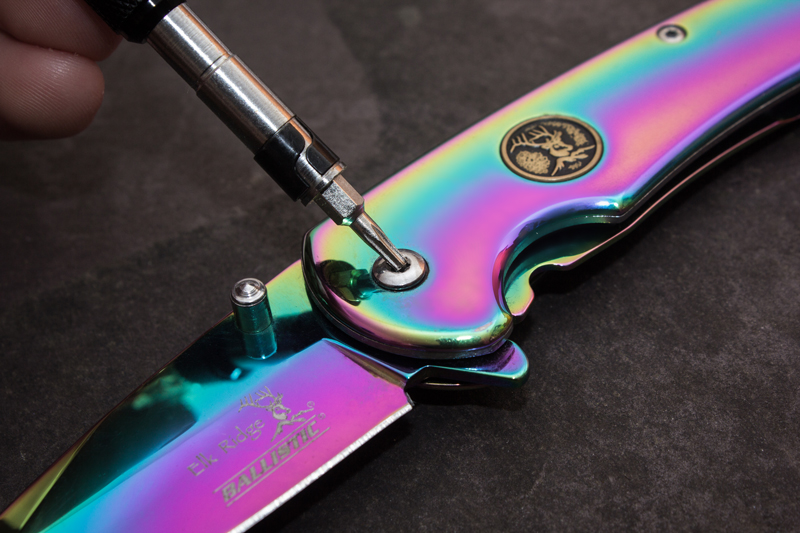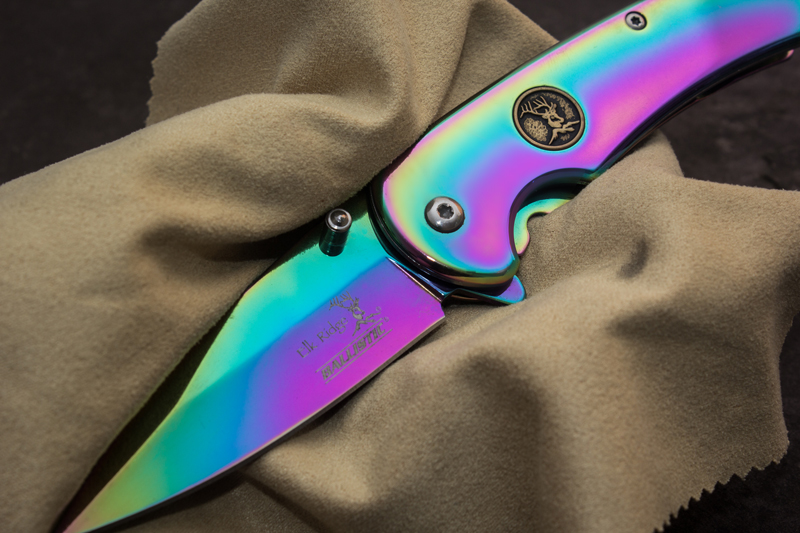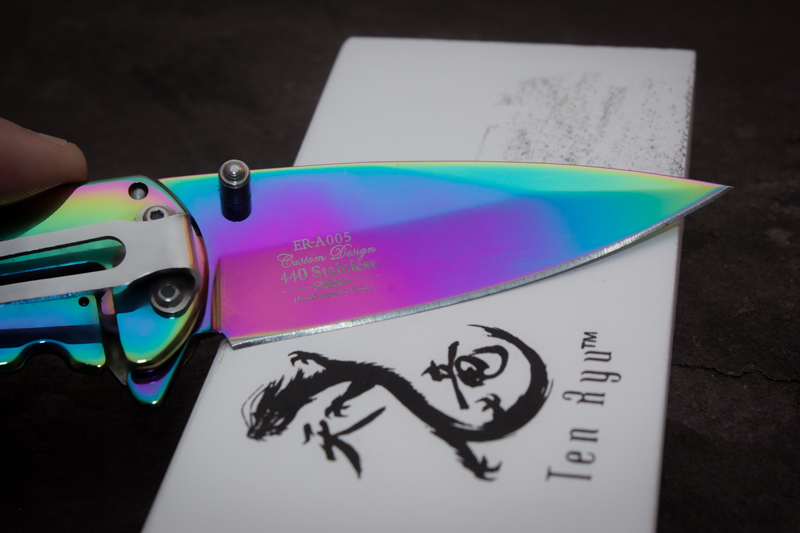Knife Care and Maintenance
Knife Care Essentials:
We get a number of questions on how to deal with common issues with folding knives. This will address these questions and offer care tips for your favourite blades in order to keep them in perfect condition!
1) Difficulty Opening and Closing.
Folding knives have moving parts. Especially our spring assisted models which you may find yourself opening and closing regularly as the mechanical action is really quite addictive. If yours is not opening fully, or feels like there is no power in the spring, the best thing to try is simply loosening the pivot screw off by a quarter turn.
Sometimes if the screw is too tight this prevents the blade action from working correctly. The same can be said of the lock bar; be it the liner or the frame lock not deploying, sometimes just loosening that screw off a quarter to half turn will get that sorted.
2) Blade play/wobble.
This is the opposite of the above problem and is usually caused by the pivot screw being too loose. Simply tighten it up by a few turns to get the desired action from the blade. This will need to be done from time to time as repeated opening will cause the pivot screw to loosten on it's own.
It's good practice to keep some torx screw drivers handy as most knives feature the same star-shaped screws. Some people drop some locktite into the female part of the pivot screw and tighten it down to the required level, this prevents it from loosening over time. However, we can't accept any responsibility should this not work for you.

3) General care and maintenance.
We don't recommend disassembling your spring assisted knives unless you have some experience caring for them, however we do recommend you put a couple of drops of mineral oil on the pivot from time to time.
This will keep the action smooth and free from dust during day to day use. The great thing about mineral oil is that if you also wipe the blade down with it once or twice a week you'll essentially remove the chance of rust forming on the blade.
Mineral oil is perfect because while you don't want to drink it, it's food safe, so as long as you only keep a light coating on the blade, you'll still be able to use it with food out and about. Everything from slicing apples to preparing your next camp meal!

4) Sharpening;
This is a very divisive topic. If you'd like to keep your blades sharp the best thing to do is occasionally strop them. This simply involves a piece of leather and drawing the edge backwards towards the spine over the leather. You can also use a piece of denim for this process.
This will keep the edge sharp as opposed to actually sharpening the blade.
Sharpening the knife will require something that can remove metal from the blade. Personally I use a high grit ceramic rod or stone. I align the edge bevel of the blade with the rod and push the blade along the rod toward the spine of the blade. This removes tiny portions of metal, crafting that perfect edge. This is a skill that takes some time to learn.
For a rough and ready edge, why not try one of our Lansky Blade Medics. They sit nicely in a bag or pocket and a few pulls through the carbite or ceramic hones will get you going. It won't be a particularly perfect edge, but it is very quick and will get you back to a useable knife. For best results, consult a YouTube video. There are thousands of effective sharpening videos on that platform.
Everything from using the bottom of a ceramic mug to Japanese sharpening stones to get true, mirror polished secondary bevels on your steel.

These are just the most common issues you can have with a folding knife, for further information, or should you have something different, we're available to help at the E-mail address: hello@dnaleisure.co.uk or via our contact form.
The knife used in the photos can be found HERE. (Elk Ridge Rainbow Ti Ballistic - ER-A005RB)
All images copyright Paul Freeman©.
